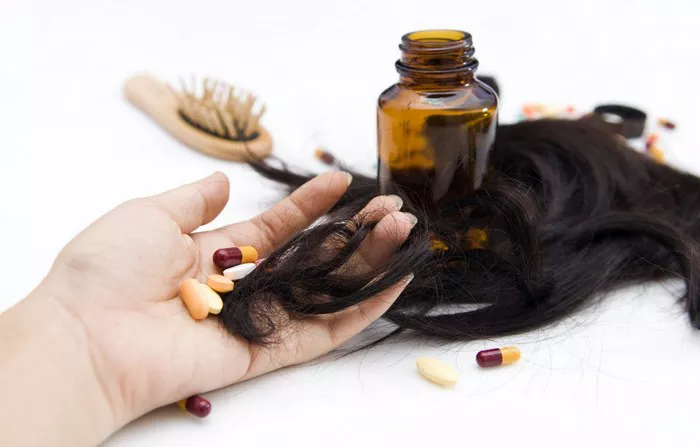Hair loss can be a distressing side effect of various medications, including antibiotics. While antibiotics are crucial for treating bacterial infections, they can sometimes lead to unexpected and undesirable effects, such as hair loss. Understanding how long this hair loss lasts and what can be done to manage it is essential for those affected. This article delves into the causes, duration, and management strategies for hair loss resulting from antibiotic use.
Understanding Antibiotic-Induced Hair Loss
Antibiotics are designed to fight bacterial infections by killing or inhibiting the growth of bacteria. While effective, these medications can sometimes disrupt normal bodily functions, including hair growth. The primary mechanisms through which antibiotics may cause hair loss include:
1. Nutrient Deficiency: Antibiotics can disrupt the gut microbiome, leading to poor absorption of essential nutrients like vitamins and minerals necessary for hair health.
2. Drug-Induced Telogen Effluvium: This is a condition where hair follicles enter the resting phase (telogen) prematurely, leading to increased hair shedding.
3. Allergic Reactions: Some individuals may experience allergic reactions to certain antibiotics, resulting in hair loss.
How Long Does Hair Loss Last After Stopping Antibiotics?
The duration of hair loss after stopping antibiotics can vary based on several factors, including the type of antibiotic, the individual’s overall health, and the presence of other contributing factors. Typically, hair loss due to telogen effluvium, which is the most common form of hair loss from antibiotics, lasts for about 2 to 6 months. Here’s a closer look at the timeline:
Immediate Reaction Phase (1-4 Weeks)
In the first few weeks of taking antibiotics, some individuals might notice an increase in hair shedding. This initial reaction is often due to the body’s immediate response to the medication.
See Also: How to Prevent Hair Loss After VSG: Things You Need To Know
Telogen Effluvium Phase (2-6 Months)
Telogen effluvium usually manifests within 2 to 3 months after starting the antibiotic treatment. During this phase, hair follicles enter the resting phase prematurely, leading to noticeable shedding. This phase can last for several months, with hair loss peaking around 3 to 4 months.
Recovery Phase (6-12 Months)
After stopping the antibiotic, hair growth should gradually resume. It may take 6 to 12 months for hair to return to its normal growth cycle and density. However, some individuals may experience a longer recovery period, especially if there are other underlying health issues.
Factors Influencing the Duration of Hair Loss
Several factors can influence how long hair loss from antibiotics lasts:
1. Type of Antibiotic: Certain antibiotics are more likely to cause hair loss than others. Tetracyclines, penicillins, and fluoroquinolones are commonly associated with this side effect.
2. Dosage and Duration: Higher doses and longer durations of antibiotic treatment can increase the likelihood and severity of hair loss.
3. Individual Health: Underlying health conditions, such as nutritional deficiencies, hormonal imbalances, and stress, can exacerbate hair loss and prolong recovery.
4. Age and Genetics: Age and genetic predisposition to hair loss can also play a role in how long the hair loss lasts and the rate of recovery.
Managing and Preventing Hair Loss from Antibiotics
Nutritional Support
Maintaining a balanced diet rich in essential nutrients is crucial for hair health. Key nutrients include:
- Biotin: Supports hair strength and growth.
- Iron: Essential for carrying oxygen to hair follicles.
- Zinc: Promotes cell growth and repair.
- Vitamin D: Helps with hair follicle cycling.
- Omega-3 Fatty Acids: Nourish hair and reduce inflammation.
Scalp Care and Gentle Hair Practices
- Avoid Harsh Chemicals: Limit the use of harsh hair treatments and chemicals that can further damage the hair.
- Gentle Hair Care: Use mild shampoos and conditioners, and avoid excessive heat styling.
- Scalp Massage: Regular scalp massages can improve blood circulation and promote hair growth.
Stress Management
Stress can exacerbate hair loss. Incorporating stress-reducing practices such as meditation, yoga, and regular exercise can help manage stress levels and support hair health.
Medical Treatments
In some cases, medical treatments may be necessary to address antibiotic-induced hair loss:
- Topical Minoxidil: This over-the-counter treatment can help stimulate hair growth.
- Platelet-Rich Plasma (PRP) Therapy: A medical treatment that uses the patient’s blood plasma to promote hair growth.
- Consultation with a Dermatologist: A dermatologist can provide personalized treatment plans and identify any underlying conditions contributing to hair loss.
Conclusion
Hair loss from antibiotics, although distressing, is usually temporary. Most individuals will see their hair return to normal within 6 to 12 months after stopping the antibiotic. By maintaining a balanced diet, practicing gentle hair care, managing stress, and seeking medical advice when necessary, the impact of antibiotic-induced hair loss can be minimized.
If you experience persistent or severe hair loss, it is essential to consult with a healthcare professional to rule out other potential causes and receive appropriate treatment. Understanding the mechanisms and duration of hair loss from antibiotics can help you take proactive steps to support your hair health and recovery.


